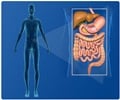Micro metal beads and magnets help deliver a biologic where it's needed to improve constipation or rectoanal incontinence in animal models.

‘MicroRNAs when mixed with micro metal beads keep them localized to the sphincter, which is more effective at keeping the microRNAs in the right place than injecting the microRNAs alone.’





Both constipation and incontinence, although multifactorial, have also been associated with the problems related to the regulation of a ring of smooth muscle around the anal opening termed, the internal anal sphincter. Unlike the way we can clench muscles just by thinking about them, smooth muscle is a type of muscle that we can't control with our thoughts.
Dr. Satish Rattan, Professor in the Department of Medicine, Division of Gastroenterology and Hepatology at Jefferson's Sidney Kimmel Medical College, together with Drs. Jagmohan Singh and Ipsita Mohanty, used altered copies of the body's own genetic make-up - small RNA fragments (microRNAs) that regulate the target gene RhoA/ROCK - in order to strengthen or weaken the muscle tone of the sphincter. (Dr. Rattan's lab had shown earlier that changing RhoA/ROCK gene expression could alter smooth muscle tone.) But rather than simply inject the agent, where it could have spread through the tissue to affect other regions, the investigators kept the microRNAs localized to the ring of muscle. They did this by first injecting the microRNAs mixed with micro metal beads, and then kept them localized to the sphincter with a magnet. This innovative yet simple approach was more effective at keeping the microRNAs in the right place than injecting the microRNAs alone. Because sphincters also help keep food in the stomach from rising up the esophagus, using a similar approach has additional implications in the lower esophageal sphincter where its localized stimulation could help prevent acid reflux in difficult-to-treat cases. First, however, the researchers will have to demonstrate whether the same principals hold true in humans, without side effects.
Source-Eurekalert















